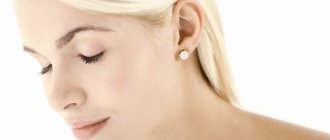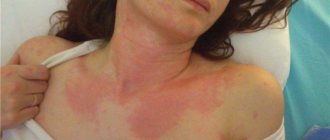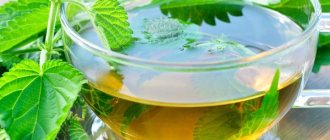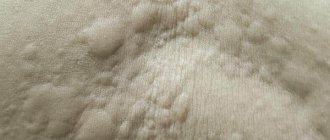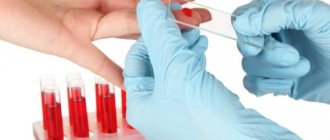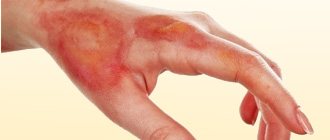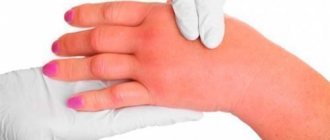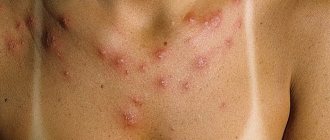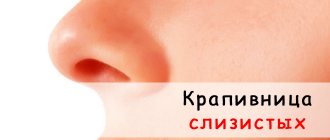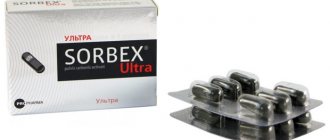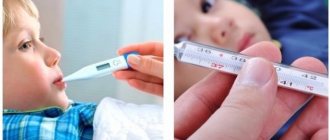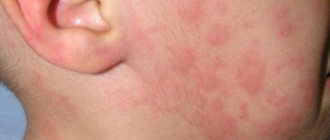Allergic reactions often occur to medications, food, certain drinks, and animal fur. Only 50 people worldwide suffer from aquagenic urticaria or water allergies. The allergy manifests itself in the form of painful blisters in different parts of the body.
Contact with water causes a painful rash and swelling. Allergies are triggered by purified and distilled water. Even sweat or tears cause pain. Aquagenic urticaria combines the symptoms of hay fever and the sensation of a nettle sting. German dermatologist Markus Maurer says that this disease changes a person's entire life. The doctor confirms that he has patients with water allergies who have suffered from the disease for 40 years.
What is aquagenic urticaria?
While water is a harmless substance for most people, there are patients who suffer from side effects from its exposure. Aquagenic urticaria is sometimes called an allergy, but unlike other types of urticaria, the condition is not characterized by a true histamine-releasing reaction.
It is likely caused by an immune reaction to something inside the body rather than an overreaction to something foreign. The exact cause is unknown, data regarding the effectiveness of individual treatments is limited, and various medications and treatments have had varying success.
The pathogenesis of aquagenic urticaria is poorly understood and is mediated in both histamine-dependent and -independent ways. Diagnosis is based on a thorough clinical history combined with water testing. Some patients may need additional testing to rule out other types of hives.
Children's water allergy
A skin disease that causes urticaria to water in children is called “children’s water allergy.” The pathological condition differs from true aquagenic urticaria in that it is observed most often in childhood. It appears in children only in the summer after swimming in cool waters. The provoking factor is the sharp temperature contrast between the body, heated by the heat of the sun, and cool water.
Symptoms of childhood allergies include the immediate appearance of red, swollen and itchy patches on the skin. They go away as soon as the child’s body temperature normalizes. In this condition, antihistamines and soothing baths with the addition of potato starch are indicated.
Classification
According to the latest World Allergy Organization guidelines, aquagenic urticaria is classified as an inducible type of chronic urticaria (reclassified as a separate subtype of urticaria).
On this topic
- Hives
What are the dangers of mechanical urticaria?
- Inna Viktorovna Zhikhoreva
- August 17, 2020
Among the limited cases of AK (1 patient in 240 million people), there is a prevalence among women of reproductive age; Symptoms first appear during puberty, with genetic dysfunction being the most likely cause. It affects men less often. Extremely rare in children.
A few sporadic family histories have also been reported, particularly those associated with Bernard-Soulier syndrome, raising the possibility of an associated genetic locus for AK, but no specific gene has been identified to date.
Symptoms
Patients develop characteristic folliculocentric wheals of 1-3 mm with surrounding erythematous patches of 1-3 cm within 20-30 minutes of skin contact with water. Damage is located mainly on the body (neck, back, shoulders, arms).
Patients experience itching, burning and tingling. Severe cases can lead to anaphylactic shock. Although systemic symptoms are extremely rare, the medical literature describes a case of a patient who presented with wheezing, difficulty swallowing, and subjective respiratory distress when drinking water.
Symptoms of aquagenic urticaria:
- itchy skin rash;
- burning after contact with water;
- blisters on the surface of the skin;
- pain and dryness in the eyes;
- labored breathing;
- swelling .
Uritary lesions usually resolve within 60 minutes of completion of skin contact with water. The affected areas are usually resistant to repeated stimulation for several hours.
AK appears when taking a bath or shower, while swimming in the sea or pool, or when exposed to rain. For some patients, sweat and tears are a potential hazard. Organic solvents (ethanol or acetone) applied to the skin do not cause aquagenic urticaria.
The condition has a significant impact on patients' quality of life, given that simple activities of daily living such as swimming or walking in the rain lead to distressing symptoms.
Due to its rarity, evidence-based treatments are lacking. Antihistamines are the cornerstone of therapy, although with varying degrees of effectiveness.
Symptoms
Water urticaria manifests itself similarly to any other allergic reaction. Therefore, a person does not always realize that the symptoms appeared from contact with water.
The following symptoms are identified:
- dryness and irritation of the skin;
- itching;
- inflammatory process on the skin;
- shortness of breath, breathing problems;
- extensive rashes;
- headache;
- disruption of the gastrointestinal tract;
- formation of small blisters;
- redness of the mucous membranes.
Such changes can be detected immediately after exposure to hot or cold water. But sometimes a reaction develops after half an hour or an hour. The liquid can be dirty or clean, sea, river, tap.
The disease can manifest itself in childhood, since the child’s skin is more delicate
Some patients report relief of symptoms within 10 minutes. For others, the reaction lasts for several days.
In childhood, the symptoms are similar. It is important to show your child to a doctor as soon as possible to rule out other diseases.
Causes
The underlying cause of aquagenic urticaria is poorly understood. Some researchers and doctors theorize that the condition develops due to the skin's hypersensitive immune system reacting to one of several irritants.
Hypotheses include:
- Sensitivity to chemical additives in water (chlorine, fluorine, etc.); According to this theory, the cause of urticaria is most likely not water, but an allergen in the water, which, when it comes into contact with the skin, causes an immune response.
- Weakened skin mast cells react with water to release inflammatory histamine proteins.
On this topic
- Hives
How to prevent an allergic reaction like hives
- Inna Viktorovna Zhikhoreva
- July 28, 2020
Presumably, when the stratum corneum or sebaceous glands are exposed to water, a toxic substance is formed that stimulates mast cell degranulation and the subsequent release of histamine, which leads to the development of urinary lesions.
Perhaps the mechanism of aquagenic urticaria is associated with a change in osmotic pressure around the hair follicles, an increase in passive diffusion of water. Sudden pressure leads to indirect provocation of urticaria. Cases of localized aquagenic urticaria after epilation have been described, supporting the hypothesis.
Another explanation involves the presence of water-soluble antigens in the epidermis: they dissolve and diffuse through the dermis, releasing histamine (which activates “itch neurons” whose sole role is to experience itch).
However, there are studies of a mechanism completely independent of histamine release, where in some patients, exposure to water did not increase histamine levels sufficient to induce urticaria.
How and why does an allergy to water occur?
Aquagenic, or water, urticaria is the result of contact of the body with water (bathing, drinking, wiping). An allergen can be tap, sea, or bottled water. Even tears and a person’s own sweat are not an exception. Scientists explain this inadequate reaction of the body to water by the presence of irritating elements in its composition. For example:
- An allergen in tap water used for drinking and cooking can be chlorine (added for disinfection), as well as copper and iron (washed out of adapters and pipe walls).
- Allergy to sea water occurs due to the rich mineral composition of salts (chlorine, sodium, magnesium, bromine, calcium, potassium).
- Irritating components in bottled water may include preservatives or antibiotics. They are sometimes added to drinking water for the purpose of long-term storage.
Urticaria from water most often becomes a problem for people with weakened immunity, which usually decreases with chronic diseases (liver, kidney failure, endocrine disorders).
The main feature of aquagenic urticaria is that if contact with the irritant is not excluded, it does not stop progressing, thereby worsening the overall health of the body. For example, if the allergen is chlorine, then in addition to an itchy rash on the skin, a person may have red and itchy eyes, a sore throat and a cough.
Diagnostics
Diagnosis of aquagenic urticaria is based on evaluation of the patient's clinical history (after exposure to water), analysis of potential signs that may cause relapse, combined with testing.
On this topic
- Hives
The best treatments for generalized urticaria
- Olga Aleksandrovna Kalinina
- July 18, 2020
The standard testing method involves applying a water compress to the patient's damp skin (arm or forearm) - a piece of cloth (or paper towel) soaked in water at 35 ° C - for 30 minutes. To check the difference in the reaction, distilled water, tap water, and saline are used over the next 10-15 minutes.
The main task of diagnosing AK is to differentiate the condition from other types of urticaria (cholinergic, cold, urticaria caused by physical factors). Water of any temperature can trigger aquagenic urticaria, but keeping compression at room temperature avoids confusion.
Thus, the symptoms of cholinergic urticaria are extremely similar to the symptoms of AK, but occur in response to appropriate stimuli: an increase in core body temperature due to exercise or emotional stress, eating spicy foods. In response to exposure to water at room temperature, this type will have a negative result.
When forming differential diagnoses, it is also necessary to take into account the clinical subtypes of AK. "Water" urticaria should be distinguished from aquatic urticaria, which is associated with polycythemia vera. With it, short-term contact with water causes intense itching, but without blisters and erythematous spots.
The physical examination also includes dermatography and a search for any systemic signs, such as rales. On laboratory evaluation, serum immunoglobulin E levels should be normal, which will help differentiate aquagenic urticaria from an immunoglobulin E-mediated allergic reaction.
In patients suffering from angioedema along with urticaria, it is useful to investigate its etiology by checking the level of C1-esterase inhibitor. It is important to note that serum histamine levels may or may not increase after exposure to water. Finally, the histopathology of aquagenic urticaria is consistent with a nonspecific form of urticaria and is therefore not important for diagnosis.
Therapeutic options
Water is a causative factor in AK, but avoiding the causative agent appears to be an impractical and sometimes impossible task for patients. There is no absolute treatment that will relieve the symptoms of water urticaria. Most methods only help reduce the impact of the condition to maintain comfort when the body needs contact with water.
On this topic
- Hives
All about chronic urticaria
- Olga Aleksandrovna Kalinina
- July 12, 2020
Urticarial symptoms (blisters and itching) are thought to be mediated, at least in part, by the action of histamine on the H1 receptor. Thus, first-line therapy includes H1 antihistamines. To minimize the impact of aquagenic urticaria, the following are used orally:
- hydrochloride;
- hydroxyzine;
- terfenadine;
- Cyproheptadine.
The therapeutic response varies from patient to patient. First generation H1 blockers (hydroxyzine) have significant sedative and anticholinergic side effects that may last much longer than the therapeutic effect, which lasts only 4-6 hours.
Second generation H1-histamine receptor blockers - with less depression of the central nervous system, but a longer duration of action.
Other means:
- Parenteral corticosteroids (actual effect and benefits are not yet clear).
- Epinephrine: Used during acute attacks of urticarial symptoms to reduce the appearance of cutaneous vasodilation. Also helps inhibit mast cell degranulation.
- Ultraviolet light (used along with antihistamines): causes the epidermis to thicken and prevents water from penetrating into this layer and interacting with the cells underneath.
- PUVA therapy is used when oral and topical treatments are inadequate. Proposed mechanisms of phototherapy for the treatment of AK include a possible reduction in mast cell activity and reactive thickening of the epidermis.
- Stanazolol, which is an anabolic steroid without significant androgenic side effects, and selective serotonin reuptake inhibitor drugs, which help achieve symptom control when combined with antihistamines and anticholinergic drugs.
- Capsaicin (used in the production of Zostrix cream) is often used to reduce the painful reaction of AK.
Treatment
First aid
As first aid, you should do the following:
- Completely exclude contact with water;
- Take an antihistamine (Suprastin, Tavegil);
- Apply anti-itching ointment to the affected area (Fenistil-Gel).
Next steps should include:
- Using only boiled water for washing;
- The duration of water procedures should not exceed 3-5 minutes;
- Wash only with warm water;
- Before contact with water, apply a protective oil-based cream (for example, rich baby cream) to the affected areas.
Attention! Having aquagenic urticaria does not mean that the patient should not shower. For these purposes, you should use only clean spring water. If it is missing, it is important to install specialized filters at home to purify water from chemical impurities.
Drug therapy
Drug therapy includes:
- Use of antihistamines . In severe cases, doctors may recommend higher doses or combine different types of antihistamines to reduce symptoms (for example, combining H1 and H2 drugs). The allergist will most likely prescribe Suprastin, Claritin, Erius, Zyrtec, Tavegil; all drugs have antiallergic and antihistamine effects and cope well with the symptoms of any type of urticaria, including aquagenic urticaria. The course of treatment is usually 2-3 weeks;
- The use of mast cell stabilizers - drugs that help stabilize and strengthen mast cells (Ketotifen, Cromolyn);
- F-therapy . In some cases, hives can be treated with ultraviolet light. This is a fairly expensive option and comes with skin side effects (increased risk of skin cancer).
Ointments
Most often, experts advise using:
- Fenistil-Gel (a strong antihistamine that quickly copes with the symptoms of the disease);
- Nezulin (anti-inflammatory drug, relieves burning and itching);
- Gistan-N (a glucocorticosteroid that slows the development of an allergic reaction).
Folk remedies
Treatment with folk remedies comes down to the use of baths, infusions and homemade ointments using herbal juices:
- Pour boiling water (250 ml) over 1 dessert spoon of dried nettle leaves , leave for an hour, drink the drink chilled 3-4 times a day for 1 week;
- boiling water (200 ml) over 10 grams of crushed wild rosemary leaves Take baths with wild rosemary for 10-20 minutes once a day;
- Wipe damaged skin with red clover juice applied to a cotton pad. After leaving the juice on the skin for up to 10 minutes, rinse the area with warm boiled water;
- Instead of clover juice, you can use dill juice . Apply a cotton pad soaked in the juice to the damaged skin for 30 minutes. This will ease the itching.
